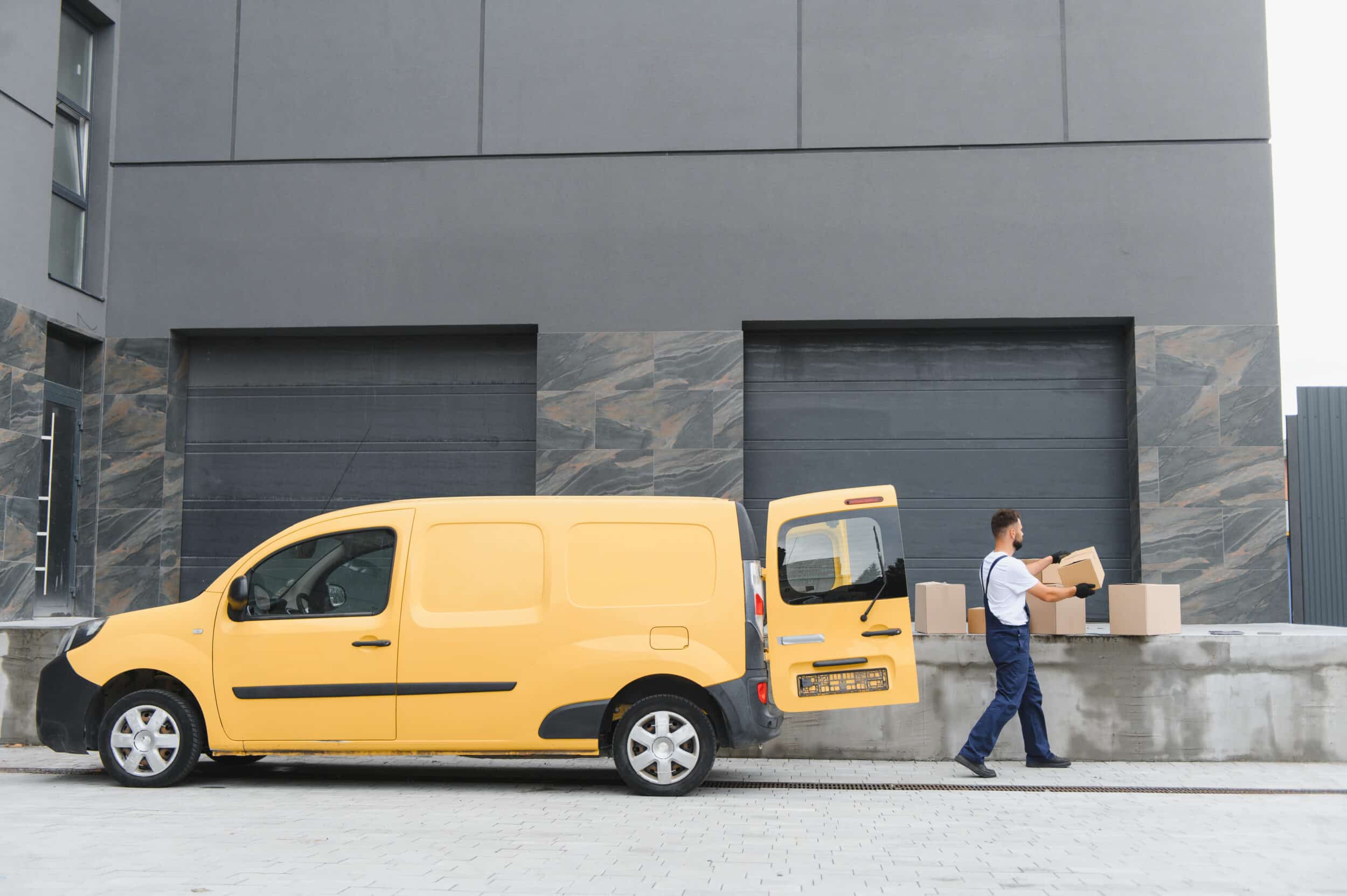How to Winter-Proof Your Route Planning Before the Festive Rush

Table of Contents
- Preparing your route planning ahead of the holiday period
- 1. Build flexibility into your route planning
- 2. Prioritise visibility and communication
- 3. Test your route planning systems before the rush
- 4. Use data to plan for festive capacity
- 5. Plan for driver safety and well-being
- 6. Strengthen your feedback loop
- 7. Streamline your customer experience
- 8. Review your setup for scalability
- In summary
- FAQs: Winter-Proofing Route Planning for the Festive Rush
Preparing your route planning ahead of the holiday period
When the festive season hits, delivery operations face their toughest challenge of the year. Order volumes surge, weather turns unpredictable, and customers expect everything to arrive on time. It’s a high-stakes period where poor planning can lead to late deliveries, overworked drivers, and frustrated customers.
But this period also brings major opportunities for businesses, as research shows that 61% of UK consumers say reliable delivery is a key reason they choose to shop online.
With this in mind, preparing your route planning ahead of the festive rush is essential. With smart systems, flexible thinking, and clear communication, your business can stay efficient and reliable through the busiest time of year.
Here’s how to winter-proof your route planning before the rush begins.
1. Build flexibility into your route planning

The festive season brings constant change: new delivery locations, increased demand, and unpredictable weather. Static schedules simply can’t cope. Dynamic route planning gives you the flexibility to react to real-time conditions and customer requests.
By using route optimisation tools that automatically recalculate journeys, you can adapt quickly to traffic, weather, and late orders. This flexibility keeps operations running smoothly, even when the rush is in full swing.
Quick actions:
– Check that your route planning software supports real-time re-routing
– Enable alerts for traffic, weather, and driver delays
– Create contingency routes for high-risk areas
– Build small buffers into your delivery windows to absorb festive disruption
2. Prioritise visibility and communication

Research shows that UK businesses risk losing up to £4.5 billion in lost sales during holiday seasons because of bad customer service. During the festive rush, customer expectations are sky-high. Real-time visibility is key to managing those expectations and avoiding a flood of “where’s my order?” calls.
Live tracking tools help customers and dispatchers see deliveries in progress, whilst driver apps automatically update job statuses. The more transparent your process, the more trust you build – even if deliveries take a little longer than usual.
Quick actions:
– Implement live delivery tracking for both dispatchers and customers
– Automate updates for estimated arrival times and any changes
– Equip drivers with mobile apps for instant status reporting
– Set up escalation rules for delays over a set threshold
3. Test your route planning systems before the rush

Don’t wait until December to find out your system can’t handle peak demand. Testing under pressure now ensures you’re ready when volumes spike.
Simulate busy festive weeks by increasing delivery volumes, adding weather disruptions, and introducing last-minute customer requests. Review how your system, drivers, and dispatchers respond. This kind of pre-rush testing can reveal hidden bottlenecks before they cause real-world chaos.
Quick actions:
– Run mock “festive week” delivery tests
– Simulate route disruptions like snow or road closures
– Review system response times and dispatch workload
– Debrief teams to capture learnings and improvements
4. Use data to plan for festive capacity

Your data holds the key to a smoother peak period. Analyse last year’s festive performance to identify recurring issues – such as delayed routes, high-demand zones, or repeat customer reschedules.
Patterns in delivery volumes, driver capacity, and timing help you predict when and where pressure will build. You can then pre-plan extra routes, drivers, or delivery windows to stay ahead of demand.
Quick actions:
– Analyse previous festive data for demand spikes and delays
– Identify problem routes or recurring bottlenecks
– Increase driver availability around known peak days
– Prepare flexible delivery slots to spread out workload
5. Plan for driver safety and well-being

The festive rush often means longer hours and tighter schedules. Combine that with dark mornings, icy roads, and cold weather, and the risk for drivers rises sharply. A well-planned route schedule that balances safety and efficiency is essential.
Ensure vehicles are winter-ready and routes account for realistic timings, rest breaks, and daylight hours. Supporting driver wellbeing is one of the best ways to keep your operation running smoothly throughout the rush.
Quick actions:
– Fit winter tyres and provide emergency kits in all vehicles
– Review driver routes for realistic timeframes and breaks
– Remind drivers of safe driving practices in bad weather
– Offer hot drinks or rest facilities where possible
6. Strengthen your feedback loop

The festive rush is the perfect time to collect insight. Every delay, reroute, or customer call holds valuable information for improving future performance.
Gather feedback from drivers, dispatchers, and customers throughout the season. Identify what worked well and where systems struggled. Modern route optimisation tools can help by automatically logging delays, reroutes, and on-time delivery rates for easy review later.
Quick actions:
– Collect feedback weekly from drivers and dispatchers
– Monitor KPIs such as delivery success rates and customer satisfaction
– Track recurring delivery or communication issues
– Review performance reports after the festive rush
7. Streamline your customer experience

Customers are far more forgiving when they’re informed. Automated notifications, live tracking, and clear ETA updates are simple but powerful ways to keep communication strong during the festive season.
The smoother your communication, the fewer calls your support team handles, and the more trust your customers retain – even during peak delivery stress.
Quick actions:
– Enable automated updates for customers via SMS and email
– Add festive messaging to notifications for a personal touch
– Review the clarity and tone of your customer updates
– Encourage customers to track deliveries via your online portal
8. Review your setup for scalability

Once the rush is over, assess how easily your operation scaled. Could your systems handle the volume? Were temporary drivers easy to onboard? Did workflows hold up under pressure?
Building scalability into your route planning ensures next year’s peak is easier. Automate repetitive tasks, simplify onboarding, and refine workflows based on what you’ve learned from this season.
Quick actions:
– Review how your system handled order surges
– Document any recurring capacity limits or failures
– Automate frequent admin or communication tasks
– Update driver training materials for next year’s rush
In summary
The festive rush can be make-or-break for delivery businesses. The ones that thrive are those that plan ahead, adapt quickly, and keep communication clear from warehouse to doorstep.
By winter-proofing your route planning now, you’ll set your team up for a smoother, safer, and more successful peak season – no matter how chaotic things get on the roads.
FAQs: Winter-Proofing Route Planning for the Festive Rush
Why is route planning so critical during the festive season?
The festive period brings a sharp rise in order volumes, unpredictable weather, and tight delivery deadlines. Efficient route planning ensures your drivers stay on track, customers stay informed, and operations stay profitable.
How early should I start preparing for the festive rush?
Start in early autumn. This gives you time to analyse last year’s performance, test systems, hire temporary drivers, and train staff before the seasonal pressure kicks in.
What’s the most common cause of delays during the rush?
Poor visibility and static delivery schedules are major culprits. Without dynamic route planning or live tracking, teams struggle to react to bad weather, traffic, and late changes in real time.
How can I keep drivers safe during busy winter deliveries?
Equip vehicles with winter tyres, de-icer, and emergency kits. Schedule routes with realistic timings, adequate rest breaks, and safe driving allowances. Prioritising safety prevents costly incidents and burnout.
How does route planning software help during the festive rush?
Route planning software automates scheduling, re-routing, and communication. It helps dispatchers manage high volumes efficiently, provides live tracking for customers, and saves time when every minute counts.
How can I manage customer expectations if delays occur?
Transparency is key. Automated notifications, live tracking links, and updated ETAs show customers you’re in control, even if deliveries take longer. Clear communication reduces complaints and builds loyalty.
What data should I review after the festive rush?
Analyse on-time delivery rates, failed deliveries, route efficiency, and customer feedback. Reviewing these metrics helps you improve future peak performance and identify where your systems need strengthening.
Can small delivery operations benefit from route planning tools too?
Absolutely. Even smaller fleets gain huge efficiency from smarter routing, especially during busy periods. It helps you manage driver workload, reduce fuel costs, and deliver a better customer experience.
How can I scale quickly when demand spikes?
Choose a route planning platform that can handle higher order volumes without slowing down. Prepare driver onboarding guides, automate dispatch tasks, and create backup delivery plans for overflow days.
What’s the single best way to prepare for the festive rush?
Test your systems and routes before it starts. A proactive approach – rather than reacting when things go wrong – is what separates smooth operations from seasonal chaos.
Maxoptra System
© MaxOptra, 2023. Privacy Policy and Cookies
